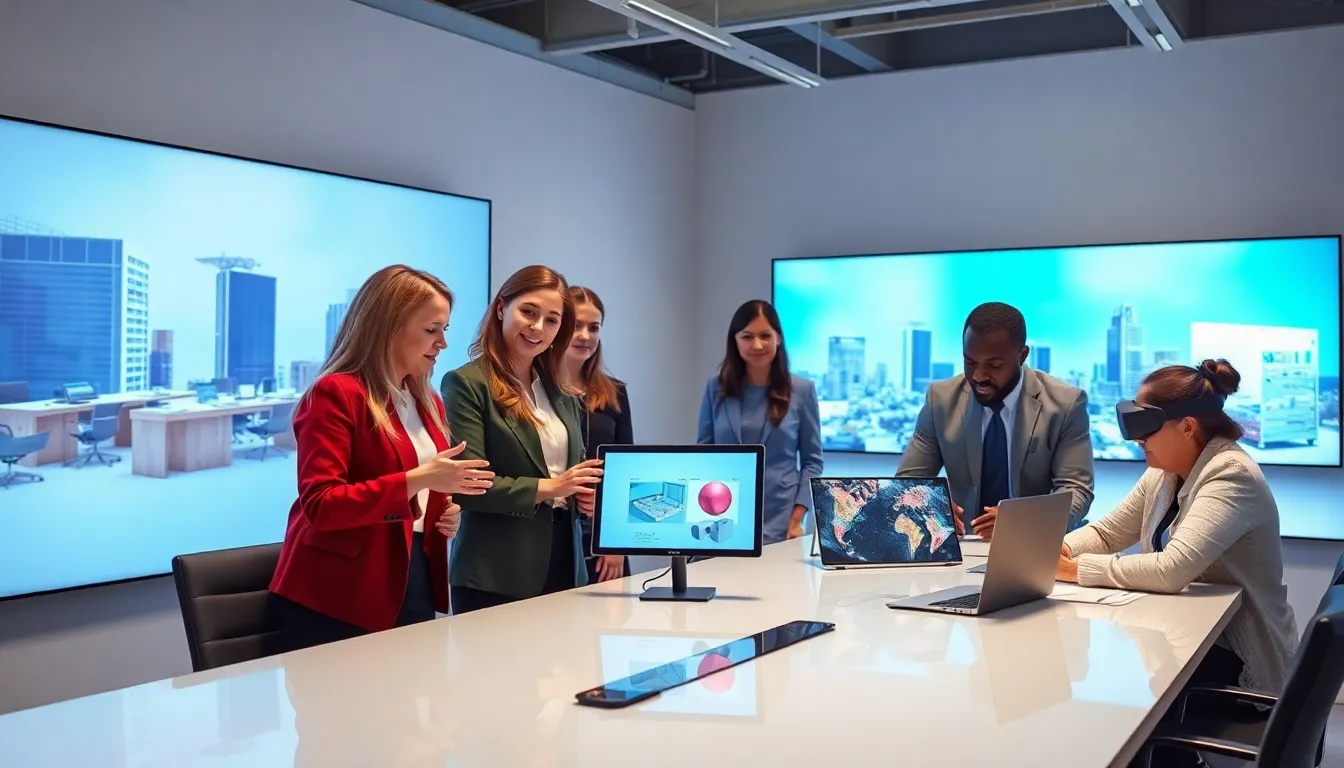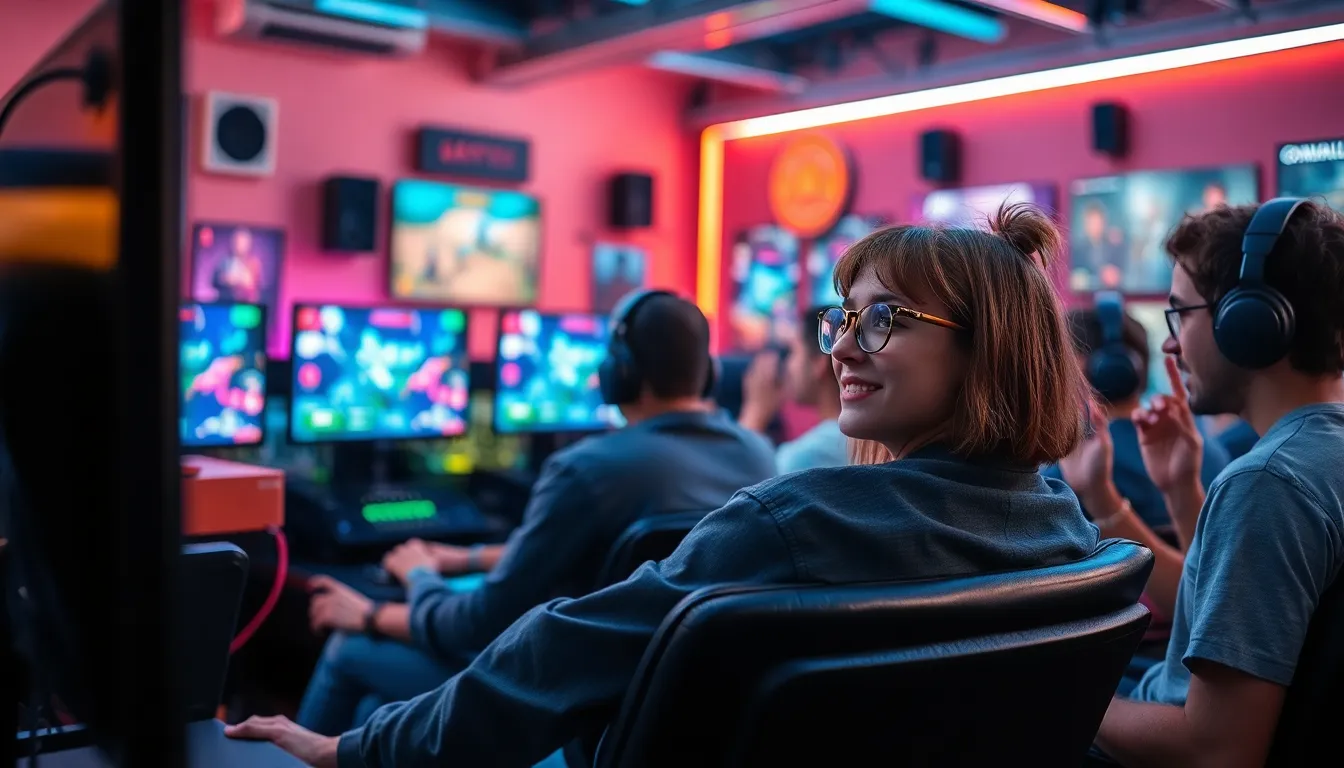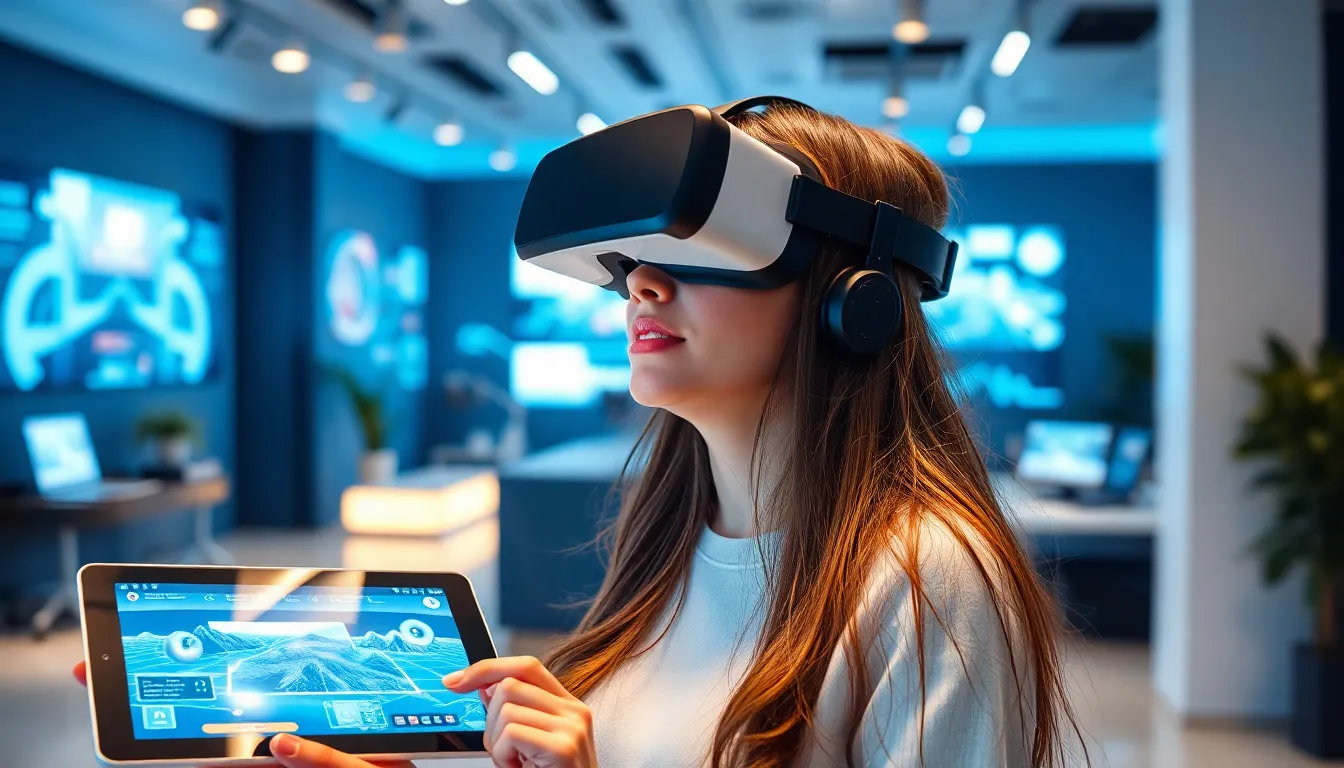Table of Contents
ToggleIn a world where reality can be a bit dull, augmented and virtual reality are stepping in like superheroes ready to save the day. With AR and VR technologies rapidly evolving, the job market is buzzing with opportunities that are anything but ordinary. Gone are the days of mundane desk jobs; now, creatives and tech enthusiasts can dive into roles that let them design immersive experiences, develop cutting-edge applications, and even create virtual worlds.
Imagine crafting experiences that let users soar through space or explore ancient ruins—all from the comfort of their living rooms. As industries from gaming to healthcare embrace these technologies, the demand for skilled professionals is skyrocketing. So if you’re ready to trade in your traditional 9-to-5 for a career that’s out of this world, it’s time to explore the exciting realm of AR and VR jobs.
Overview of AR VR Jobs
AR and VR jobs represent a rapidly evolving segment of the technology sector. Positions in this field include roles such as AR developers, VR designers, and content creators. Skills in 3D modeling, programming, and user experience design are crucial for success.
Companies across various sectors, like entertainment and education, actively seek professionals who can harness AR and VR technologies. Job opportunities in gaming include roles that focus on building interactive environments. Health and wellness careers increasingly utilize VR for therapeutic and training purposes.
Impacts on industries also shape the specific skills needed. Knowledge of software development tools such as Unity and Unreal Engine is essential. Familiarity with new hardware, like VR headsets and AR glasses, enhances employability in this competitive market.
Salary expectations for AR and VR jobs often meet or exceed average industry salaries, especially in technology hubs. For example, AR developers projected average salaries range from $80,000 to $120,000 annually depending on experience and location.
Networking within the tech community proves beneficial for job seekers. Attending industry meetups and seminars offers valuable connections. Further, online forums dedicated to AR and VR provide collaborative opportunities and advancements in tools and techniques.
Employment projections indicate significant growth in AR and VR jobs over the next decade. As businesses adopt these transformative technologies, they create a demand for innovative thinkers and skilled practitioners. Engaging in continued education and training opens pathways to new career advancements within this vibrant field.
Types of AR VR Jobs


Diverse opportunities abound in the AR and VR job market. Positions in this field can be categorized into technical, creative, and management roles.
Technical Roles
Technical roles focus on the development and programming of AR and VR experiences. AR developers are responsible for creating applications that enhance reality, often using tools like Unity and Unreal Engine. VR developers specialize in designing immersive virtual environments, requiring strong skills in 3D modeling and software engineering. Quality assurance testers ensure the functionality and user experience of these applications meet industry standards. Salaries for technical roles generally range from $80,000 to $120,000 annually, depending on experience and location.
Creative Roles
Creative roles play a crucial part in designing visually engaging experiences. 3D artists and animators conceptualize and create assets for both AR and VR applications, focusing on realism and interactivity. User experience (UX) designers enhance the usability of these applications, ensuring they are intuitive and accessible. Storytellers and content creators develop narrative-driven experiences, capturing user interest and engagement. These roles average annual salaries of around $70,000 to $110,000, reflecting the demand for innovative thinkers in this space.
Management Roles
Management roles oversee the execution of AR and VR projects, ensuring alignment with business objectives. Project managers coordinate teams, set timelines, and manage budgets, creating a roadmap for success. Producers facilitate communication between technical and creative teams, ensuring collaboration and efficiency. Product managers define the vision for AR and VR products, guiding development based on market trends and user feedback. Management roles typically command salaries ranging from $90,000 to $140,000, influenced by experience and company size.
Required Skills for AR VR Jobs
AR and VR jobs demand a diverse skill set. Professionals need expertise in both technical and soft skills to thrive in this evolving field.
Technical Skills
Programming knowledge is crucial. Familiarity with languages such as C# and C++ enhances a candidate’s marketability. Experience with software like Unity and Unreal Engine allows for effective development of immersive experiences. 3D modeling skills provide the ability to create realistic environments. Additionally, understanding user interface and user experience design principles ensures that products are intuitive. Working knowledge of new hardware, including VR headsets and AR glasses, improves adaptability in this fast-paced landscape. Proficiency in these technical areas significantly increases job prospects.
Soft Skills
Creativity drives innovation in AR and VR projects. Strong communication fosters collaboration among team members. Problem-solving skills enable professionals to navigate challenges during development. Adaptability is vital, given the rapid technological advancements in this industry. Attention to detail ensures high-quality output. Project management abilities help in meeting deadlines and managing resources effectively. Building a network within the AR and VR community can lead to valuable opportunities and insights. These soft skills complement technical capabilities, making candidates more appealing to employers.
Industry Demand for AR VR Jobs
The demand for AR and VR jobs has skyrocketed as various sectors begin to embrace these technologies. Industries like gaming, healthcare, and education now seek professionals who can create immersive experiences. Rapid growth in the market highlights the need for roles such as AR developers, VR designers, and content creators. Employers increasingly prefer candidates skilled in 3D modeling, programming, and user experience design.
In the realm of technical roles, specialists focus on developing and programming AR and VR experiences, with salaries typically ranging from $80,000 to $120,000 annually. Conversely, creative roles, responsible for designing engaging visuals, offer average salaries around $70,000 to $110,000. Management positions oversee project execution and often command salaries of $90,000 to $140,000, depending on experience and company size.
Networking plays a crucial role in securing AR and VR positions. Connections within the tech community, established through industry meetups and online forums, can lead to job opportunities. It’s essential for job seekers to stay informed about emerging technologies and trends, as the landscape continues to evolve.
Continued education and training remain vital for success in this dynamic field. Familiarity with software tools like Unity and Unreal Engine enhances employability in this competitive job market. By developing both technical abilities and soft skills, such as creativity and problem-solving, candidates can significantly boost their marketability to potential employers.
Expectations for growth in AR and VR jobs over the next decade indicate a promising future for innovative thinkers and skilled practitioners. Companies actively recruit for these roles, creating numerous opportunities for career advancement. The evolving demand underscores the importance of fostering skills that will meet the challenges of this burgeoning industry.







